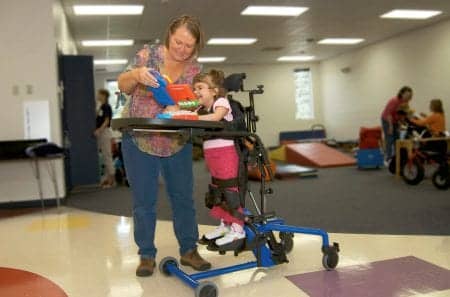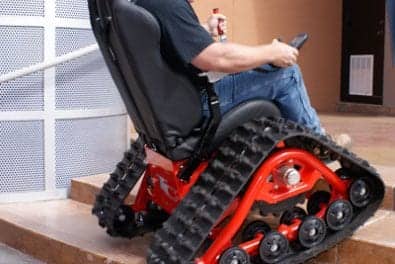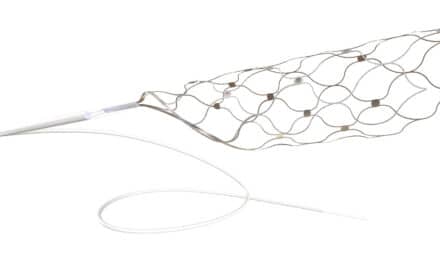
Studies and clinical use of dynamic standing as part of the treatment protocol have helped determine that dynamic standing provides optimal results compared to static standing programs.
Standing is an important milestone in gross motor development, and can benefit many other body systems. Dynamic standing systems, in particular, allow a child to weight shift, flex and extend muscles, and move as much as possible in all planes. As part of pediatric therapy, dynamic standing is used for strengthening, to improve range of motion, and for reciprocal weighting and un-weighting of the long bones to facilitate growth and strength. A dynamic stander can also benefit joint health, as well as improve trunk/head control and reaching skills. Moving and shifting weight while standing allows pediatric patients to maintain and improve cardiopulmonary function, digestion, and respiration.
Dynamic standing offers considerable benefit to a child’s physical health, but can also enhance the psychological well-being of young patients. A child who feels free to move through dynamic standing will experience improvement in self-esteem, visual motor control, and socialization. Ongoing studies and clinical use of dynamic standing as part of the treatment protocol have helped determine that dynamic standing provides optimal results compared to static standing programs. This article explores how dynamic standing—as a single activity—achieves numerous physiological and psychological benefits in a shorter period of time than static standing alone, which would require a number of different modalities and greater amounts of time to achieve similar results.
PHYSIOLOGICAL BENEFITS
Chief among the physiological benefits of dynamic standing systems is how it can affect bone development. Weighting and un-weighting of the long bones leads to improved bone density and joint health, including deepening of the acetabulum as compared to static standing.1,2,8 Studies have shown that reciprocal stress on the long bones can have a far better outcome in improving bone density and hip alignment compared to static loading.1,8 This has been illustrated by Frost’s principle, which states that the stimulus for remodeling is repetitive dynamic flexure caused by repetitive mechanical loading on the bone (dynamic weight bearing), not stress through pressure alone (static weight bearing). In 2002, two physical therapists, Bjorg and Mercer, performed a study that demonstrated measurements of bone material density before and after standing programs. This study revealed increases in bone material density among children who used a dynamic stander compared to those who used a static stander. Prior to the availability of dynamic standing systems, reciprocal weight bearing was performed using a gait trainer or manual therapy. Optimal joint alignment cannot always be achieved in a gait trainer as it can in the dynamic stander because patients must often contend with issues of muscle weakness and tone.
Improved digestion is another benefit provided by dynamic standing. Constipation plagues many patients who have CP or other diagnoses that lead to decreased GI motility. Standing upright against gravity allows trunk elongation that enhances bowel and bladder function. Use of daily dynamic standing can reduce or prevent the need for medications or enemas to solve these issues. Dynamic standing also leads to improved renal function and urinary tract drainage.
Decreased spasticity is a beneficial effect of dynamic standing. Muscle tone (or involuntary spasticity) tends to decrease when properly supported during prolonged standing. If play activities are incorporated into dynamic standing, tone has been observed to remain decreased for longer periods when the child is engaged in a desirable activity.

By using a dynamic stander, 3-year-old Darrell, who has chronic lung disease, has improved his wheelchair propulsion skills and cardiopulmonary endurance.
Dynamic standing can improve joint ROM and prevention of contractures. It is not always easy to provide stretching to the squirmy pediatric patient or the resistive teenager. Static and dynamic standing allows for a “hands off,” prolonged stretch to the hamstrings, hip flexors, and gastrocsoleus that is better tolerated and prevents contractures of these muscles, which often occur with prolonged time in sitting or in bed. Kyphotic posture and repetitive movements that occur with propulsion of a wheelchair in sitting can lead to shoulder, wrist, and elbow issues. In comparison, use of the upper extremities to propel while standing increases rotation of the spine and shoulder retraction and extension, improving range of motion and strength throughout the shoulder complex.
Benefits of dynamic standing include improved upright posture. Standing in prone mobile standers improves trunk extension and shoulder retraction, including decreasing flexion and kyphotic postures, and leads to improved midline head control against gravity. Use of a dynamic stander in the home allows caregivers to achieve postural gains similar to those achieved in physical therapy.
Furthermore, dynamic standing can improve head control. Standing at various angles allows for development of midline head control against gravity, which is especially useful in hypotonic patients and early intervention with the 1-year-old to 3-year-old developmentally delayed patients. Dynamic standers in the home provide a noninvasive way for children to make gains in neck and back extensor strength similar to those made in physical therapy via therapeutic activities with benches, balls, and manual therapy.
Improved respiration is an important benefit of dynamic standing. Working on dynamic standing with young patients who are ventilated or respiratory compromised leads to improved strength in accessory breathing muscles and better cardiopulmonary function.9 These needs have previously been met through chest physical therapy and postural positions in bed and on the ball. Moving the upper extremities for propulsion of a stander leads to improved cardiopulmonary function.9 Darrell, a 3-year-old boy with chronic lung disease who has been a patient at the HSC Pediatric Center since infancy, began static standing to improve head control and to begin weight bearing through his lower extremities at 11 months of age. He progressed from static standing to dynamic standing in February 2011 and since then has been able to access his environment independently through use of a mobile prone stander. Use of the dynamic stander has led to improved wheelchair propulsion skills, cardiopulmonary endurance, and decreased need of oxygen and humidified air during the day, as well as progression to reciprocal stepping in a gait trainer in March 2011.

Dynamic standing improves field of vision, allowing easier access for children who use eye gaze devices..
Improved circulation is another benefit provided by dynamic standing. Upright postures against gravity allow for improved circulation throughout the lower extremities and digestive organs, with better results than positioning in bed with elevation or massage. Weighting and un-weighting the lower extremities and subsequent contracting and relaxing of the muscles improve circulation through skeletal muscle pumping.
Finally, dynamic standing can help improve reaching skills. Reaching activities in standing lead to improvements in reaching compared to seated activities.5 Dynamic standing allows children to reach for and access areas otherwise not available to them when sitting or in wheelchairs.
PSYCHOLOGICAL BENEFITS
One of the true strengths of dynamic standing lies in its ability to improve psychological health in parallel with physiological health. Self-esteem is a component of a child’s psychological health to which dynamic standing can offer significant benefit. Dynamic standing allows children to be at eye level with their peers, which improves social skills and self-esteem, eye contact, and field of vision. Children who use communication devices, including those operated through eye gaze, access their devices with improved ease in standing.
Improved alertness, mood, and attention can also result from the use of dynamic standing systems. Independent mobility almost always brings a smile. Mood and attention are seen to improve during dynamic standing.
Dynamic standing also allows for improved participation in therapy plans of care. This allows children and teenagers to have choices in their plans of care and to exert control over the position of their bodies in space, which leads to better outcomes and satisfaction.
RECOMMENDATIONS AND FUNDING ISSUES
Trials of equipment in therapy and at home/school should be performed prior to deciding which type of personal stander should be ordered. When deciding on a type of stander, recommendations should be based on the goals of the standing program, patient’s size, level of assistance required for the transfer, the patient’s ROM, head control, joint integrity, positioning needs, and tolerance for standing. A major consideration is also the setting for use (home, school) and space available, as well as the skill level required for carrying out the standing program in that setting. When determining dynamic stander versus gait trainer, the therapist must take into account the therapeutic value of the equipment as it relates to therapy goals, such as: independent mobility over functional distances, progression toward walking with less support, improved joint alignment, improving range of motion through standing, and ability of caregiver/patient to use the product independently. A multipositional stander may be worth the cost in the clinic and school setting because it allows for use of the stander with multiple patients. Personal standers recommended for use at home should allow for safe and easy transfers to prevent equipment abandonment, and should be the least costly alternative based on funding limitations.
Currently, at the HSC Pediatric Center’s Orthotics, Prosthetics, and Equipment Department, approximately 80% of standers are recommended for individual children to use in the home, 15% are purchased by schools/facilities, and 5% are being purchased out-of-pocket. Unfortunately, the out-of-pocket purchases may be increasing as multipositional and mobile standers have frequently been denied by payor sources as duplicate equipment to wheelchairs or gait trainers. The benefits to standing are often in question. The OPED department recommended a sit to stand stander for a patient with neuromuscular impairments and range of motion deficits secondary to sickle cell disease, spasticity, and hip dysplasia that was denied by the patient’s insurance. The denial letter stated, “It has been determined that stationary, mobile and active standing systems are unproven for the treatment of individuals with neuromuscular disorders due to inadequate clinical evidence of safety and/or efficacy in published, peer-reviewed medical literature. Therefore, medical necessity has not been established.” Therapists and physicians must be able to justify their choice of stander for the patient based on equipment trials in therapy, evidence-based practice, safety of the transfer, and willingness of caregivers to use the stander. The Letter of Medical Necessity must include the specific goals in the physical therapy plan of care that are going to be addressed by the stander, which cannot be met by the gait trainer or through another treatment modality, including the desired positioning needed to achieve therapy goals. The denial letter for this patient was, in fact, successfully appealed using evidence-based practice described by Green et al,3 Herman et al,4 and Jesinskey et al.6
Continued review of studies and research about the benefits of standing is needed to ensure justification for funding of the dynamic standing systems available. Dynamic standing as an adjunct to therapy and a home carryover program provides numerous benefits to pediatric patients, who are most happy when provided with the opportunity to get up, stand up, and move.
Shannon L. Bowles, PT, ATP, is also a personal trainer, and has practiced pediatric physical therapy for 12 years in all settings. For the last 6 years, she has worked as the senior therapist coordinating the Orthotics, Prosthetics, and Equipment Department (OPED) at the HSC Pediatric Center, Washington, DC, specializing in provision of DME and orthotics.
REFERENCES
- Bjorg G, Mercer V. Effects of a dynamic versus static prone stander on bone mineral density and behavior in four children with severe cerebral palsy. Pediatr Phys Ther. 2002;14:38–46.
- Caulton JM, Ward KA, Alsop CW, Dunn G, Adams JE, Mughal MZ. A randomized controlled trial of standing programme on bone mineral density in non-ambulant children with cerebral palsy. Arch Dis Child. 2004;89:131–35.
- Green EM, Mulcahy CM, Pountney TE, Ablett RH. The Chailey Standing Support for children and young adults with motor impairment: a developmental approach. British Journal of Occupational Therapy. January 1993:56.
- Herman D, May R, Vogel L, Johnson J, Henderson RC. Quantifying weight bearing by children with cerebral palsy while in passive standers. Pediatr Phys Ther. 2007;19:283–87.
- Jesinkey K, Näslund A, Hirschfeld H. Initiating of reaching when standing with and without DAFOs in children with spastic diplegia. Advances in Physiotherapy. 2005;7:144–153.
- Qin YX, Rubin C, McLeod KJ. Nonlinear dependence of loading intensity and cycle number in the maintenance of bone mass and morphology. J Orthop Res. 1998;16:482–89.
- Salem Y, Lovelace-Chandler V, Zabel RJ, McMillan AG. Effects of prolonged standing on gait in children with spastic cerebral palsy. Phys Occup Ther Ped. 2010;30:54-65.
- Scrutton D. The early management of hips in cerebral palsy. Dev Med Child Neurol. 1989;31:108–16.
- Stuberg WA. Considerations related to weight-bearing programs in children with developmental disabilities. Phys Ther. 1992;72:35–41.
- Thompson C, Figoni S, Devocelle H, Fifer-Moeller T, Lockhart T, Lockhart T. Effect of dynamic weight bearing on lower extremity bone mineral density in children with neuromuscular impairment. Clinical Kinesiology. 2000;54:13-18.





